What is considered a good app rating?
A good app rating is generally four stars or above. Apps with higher ratings and numerous reviews are more likely to attract downloads compared to those with fewer reviews, even if they have a perfect rating.
Try searching for
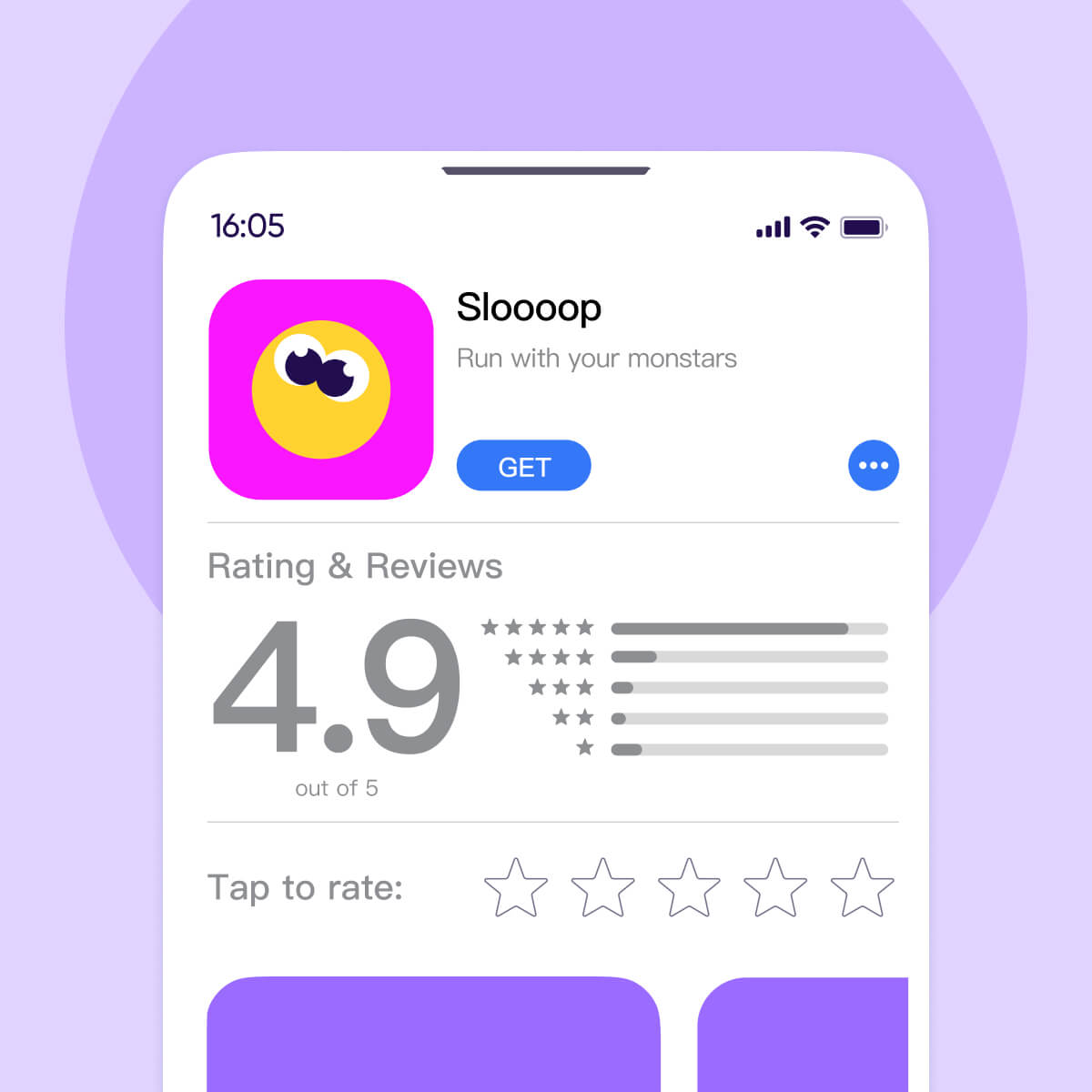
In today’s crowded mobile app landscape, trusted recommendations in the form of app ratings and reviews carry more weight than ever. Research from Alchemer shows that 59% of people always check them out before committing to an app download.
And it’s not just quality that matters, but quantity: customers increasingly look for a large number of positive ratings to demonstrate your app’s credibility.
But how do you convince more users to leave positive ratings and reviews? You might have heard the saying “A happy customer tells a friend; an unhappy customer tells the world.” Getting satisfied users to share their experiences with the world isn’t always easy, but it’s vital for your app’s success. And this guide will show you how to do it.
Read on to discover why app ratings and reviews are so important, and how to secure a higher ranking on popular app marketplaces like the Apple App Store and Google Play.
Let’s go!
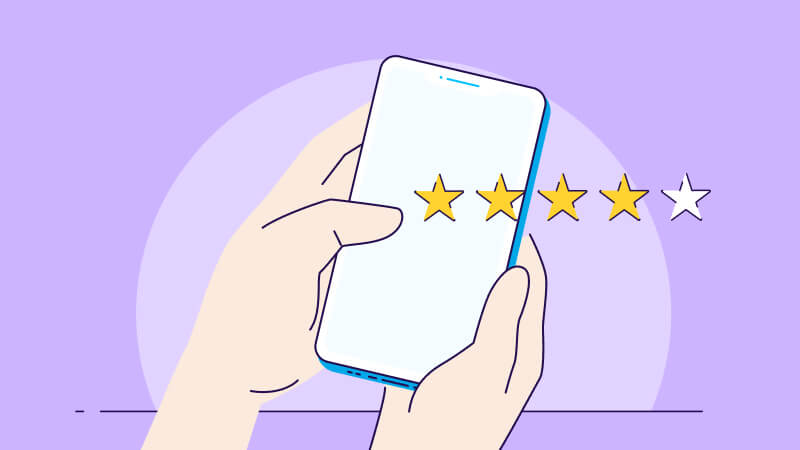
Let’s start with the basics. When we talk about app ratings and reviews, we mean the one-to-five-star clusters and individual comments that users can leave under an app in the App Store or Google Play store. Each individual rating contributes to the average score displayed for your app.
App reviews give users a chance to elaborate on their experience with your app. Note that the Apple and Google marketplaces have different criteria for the reviews they choose to highlight — we’ll explore that a little later in this guide.
You can see all the ratings and reviews customers leave under your app, including the average rating assigned based on the feedback. You can also respond to these reviews, thanking users or acknowledging their issues, to build a rapport with people actually using your app.
App ratings and reviews are key to successfully marketing and growing your app. Here’s why:
In short, maintaining a high average rating and positive user feedback will make your app stand out from the competition.
Consider the Google Play Store. It currently boasts over 3.3 million apps, but only around half a million of those have been rated by users. Of those, 2 million have three reviews or fewer, meaning they’re unlikely to grab users’ attention. You want to join the 114,000+ apps rated 4.5 stars or above.
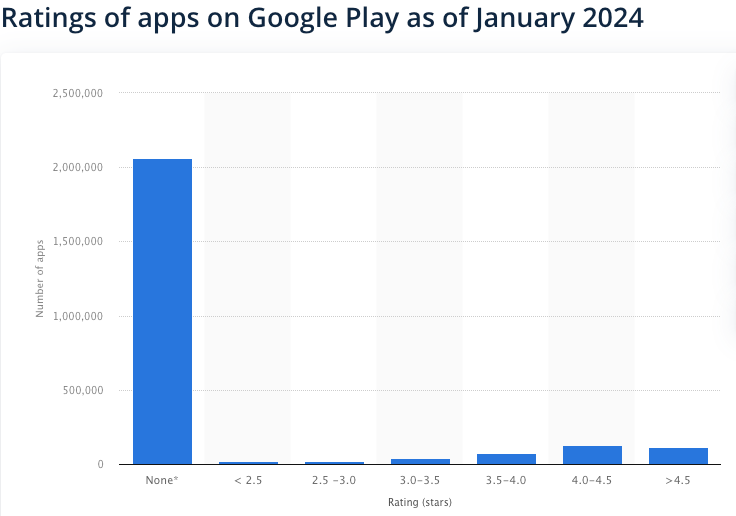
According to Alchemer, only 50% of users will even consider downloading an app rated three stars. Score below that, and you’ll immediately be written off as untrustworthy.
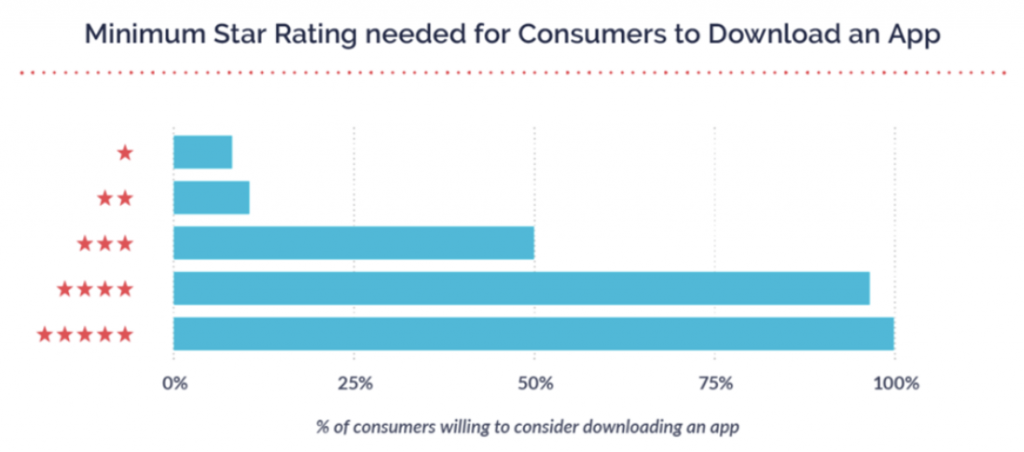
But to really drive downloads, you should aim to maintain an average app rating of four stars or higher. Case in point — moving a three-star app to four stars can lead to an 89% increase in conversion rate.
That said, a five-star rating won’t have much impact if your app only has one or two reviews. Instead, users are likely to choose another app with an average 4.5-star rating if it has hundreds of reviews.

App store optimization (ASO) is the process of optimizing mobile apps to improve their ranking in an app store’s search results. Think of it as search engine optimization (SEO) for the app store.
Just like with SEO, the app stores will prioritize content that’s proven to be relevant and helpful. So, the better your app is rated, the higher you’ll appear in search results. That extra visibility gives you a huge boost in a crowded marketplace.
And once users find your app in store, they’re more likely to download it if they can see it works. Positive ratings and reviews provide the social proof needed to drive conversions.
Paired with proven ASO techniques, app ratings and reviews significantly improve organic visibility both within app stores and outside and result in the following benefits:
When searching for an app in the app store, users can see both the name of your app and a summary rating. Naturally, the more stars your app has, the more convinced they’ll be to check out your app, increasing the traffic to your app’s store page.
Note that both Apple and Google prioritize apps with higher ratings and hide apps with lower ratings. So the quality and quantity of your ratings directly affect your app’s keyword rankings and searchability.
If you want to rank higher for a particular keyword, pay attention to your app’s ranking and feedback. The more positive feedback you receive, the more organic traffic you’ll see.
Positive app ratings and reviews encourage potential users to see your app in a positive light.
Think about it: when buying online, if you find a brand has a lot of negative reviews, won’t you feel skeptical of its products and services?
Building positive user feedback helps build a professional and reliable reputation for your brand.
Your job isn’t done when users land on your app store — you’ll still need to convince them to go ahead and hit ‘Install,’ which is where app ratings and reviews come into the picture.
The more positive app ratings and reviews you have, the more likely it is that potential customers will convert into actual users.
As an app developer, generating more in-app revenue is likely one of your primary goals. The good news is that app reviews and ratings have a direct impact on app revenue.
More positive app reviews means more downloads, and — even if your app is free to install — that translates into increased revenue opportunities, be it from in-app advertising, in-app purchases, or paid subscription models. You also attract more app monetization and marketing opportunities from investors and advertisers and earn more revenue. A Statista report found that top-rated apps will grow global mobile app revenue to up to $613 billion by 2025.
Reviews and ratings open a communication channel between you and the reviewer. You can listen to users’ likes and dislikes, and then take the conversation forward. Express your gratitude for positive app reviews, or acknowledge frustrations for negative reviews, and use feedback to continuously improve your app.
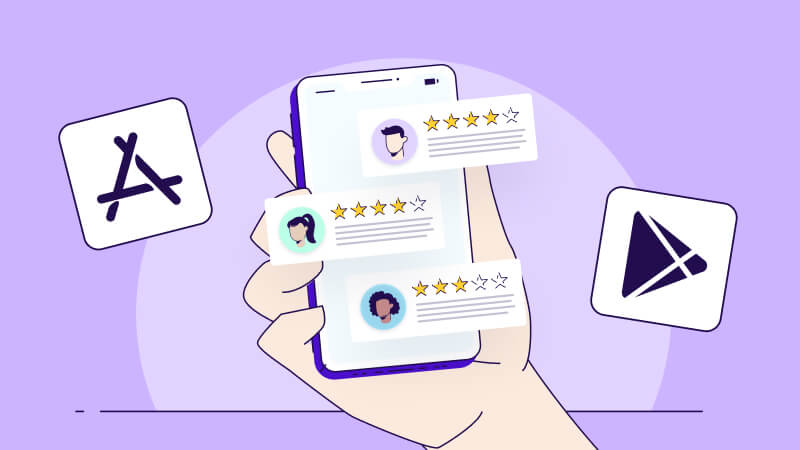
Apple App Store and Google Play Store are the main places users will access your app, so it’s vital to stand out in both. While both stores feature one-to-five-star ratings and the option to leave detailed reviews, there are a few differences to be aware of.
In the Apple App Store, your average rating is calculated based on every rating your app receives.
Moreover, if you feel the average rating doesn’t accurately reflect the current state of your app, you can reset it when you push a new update to the App Store Connect. That means you’ll get a new summary rating, disregarding those from previous versions. (Old user reviews will still be visible, though.)
Google Play doesn’t let you reset your app rating, but it does allow users to change their current rating.
On the other hand, Google Play doesn’t factor in lifetime rankings when assigning an average ranking. Instead, it gives more weight to ratings made on the current app version, to better reflect the current state of the app.
If users are increasingly satisfied with your new updates, your app ratings will also improve quickly.
Apple’s algorithm chooses about six reviews to highlight on the app listing page. These reviews can be from a few hours ago to even a year ago, so there’s always a fear of the platform featuring your negative user reviews.
Google Play also highlights reviews, albeit with a twist. It shows users the most positive and the most critical review of an app. So, there’s no getting out of having a negative user review featured on your Google Play page.
The other important difference to note between the two app marketplaces is the role of keywords.
Being a Google product, Google Play indexes all descriptive words on your app store listing, including user reviews. This means you can get your app to rank for keywords aside from ones included in your app name and app description.
You can also sneak in priority keywords when responding to user reviews in Google Play to improve your ranking. Don’t go too crazy and stuff keywords into your replies, though, as it‘ll only turn off the user.On the other hand, Apple doesn’t index any keywords found in user reviews. It gives you an additional keyword field when editing your App Store listing, where you can input keywords you haven’t already added to your app name and app subtitle.
Now that you know the importance of app ratings and reviews, let’s discuss some proven ways to improve them across all marketplaces.
At the end of the day, it’s your app’s features and functionalities that influence whether users leave a positive or negative review.
When your app meets their preferences and needs, users will leave a high rating, along with a positive review. But if your app — for the lack of a better word — sucks, they’ll not only uninstall your app but also send you a lot of negative feedback, causing your ranking to plummet.
Therefore, the first step toward better app store ratings is improving app performance and ensuring you’re offering the features users want.
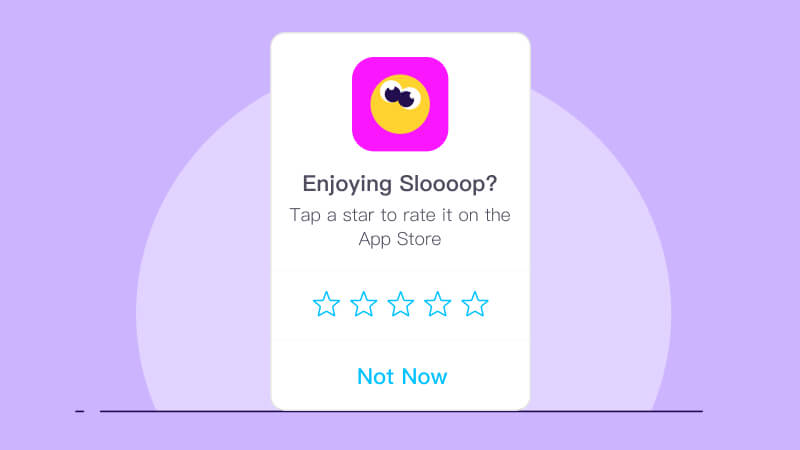
Another way to improve your app store ratings is to get more of them. The more ratings you have, the less volatile your average star rating will be. Plus, apps with a large number of ratings rank higher in the app store. Ideally, you’ll convince at least 1% of users to leave a rating.
And the best way to get more ratings? Simply ask.
You’ll find several opportunities where you can ask users to rate and review your app while keeping it organic. Even if you have older ratings, you can ask new users to leave fresh ratings and old users to update their previously negative reviews. Push notifications are great for the wider public, while personalized notes work well for a smaller audience. The good news is users are generally happy, especially when satisfied with an app, to leave a rating if you just ask for it.
Use every review your app gets as a developer response source. If a review points out downloading issues, for instance, release a new update that overcomes this problem and provides a better experience to users.
Once you’ve released the new update, let users know. This shows them you want to deliver a better experience and appreciate their engagement, allowing you to build a network of loyal users. More importantly, users will then give you a better rating and review, improving your app’s overall ranking in the app store.
To stay on top of your ratings, we recommend tracking them. If you find they’re getting worse or decreasing in number following an update, read through your newest reviews to find what users didn’t like about it and take the necessary action to fix the issues.
Remember, it’s never too late to rescue your app store ratings and reviews.
It’s important that the process of reviewing your app is hassle-free and seamless. Some of the best tactics include:
You want ratings and reviews from active and satisfied users. So think about how you can segment this group, the best way to approach them, and, crucially, the optimum time to ask for their feedback.
Timing is another important factor when asking for app ratings and reviews.
Ideally, you want to catch users when they’re feeling positive about your app. This could be after they receive an order, pass a milestone, or explore a new feature. Consider setting up triggers based on in-app behavior or other milestones to achieve this. For example, you can send a friendly push notification an hour after the user receives the food order they placed through your food delivery app.
Ensure you aren’t interrupting the user’s app experience or reaching them when they’re in a negative mindset. For instance, don’t request a rating or review after their order was delayed or when they’re in the middle of completing an action on your platform.
According to Google, developers who respond to user reviews see a +0.7 boost in their app rating. In fact, users often change their initial negative rating to a positive one after getting a developer response.
And yet many app companies simply don’t respond to feedback, or do it too late. 53% of users expect businesses to respond to a negative review within a week, while 1 in 3 expect to hear back within three days.
So, acknowledge all your reviews, whether positive or negative. Say thank you for positive reviews as well as more critical feedback, and reassure negative reviewers that you’ll make improvements.
When you’re confident you’ve addressed or solved a user’s concern, let them know. Every time you respond, users will get a notification, and when they see you care about their experience, they may change their minds and give you a better rating and review.
Note that the quality of your response also matters. Here are a few tips to help you get this right:
Showing users that you see them as real human beings, and genuinely want to improve their app experience, goes a long way to improving your reputation.
While in-app feedback is undoubtedly the most efficient way to collect ratings and reviews, there are lots of alternative channels you can experiment with to gather more feedback.
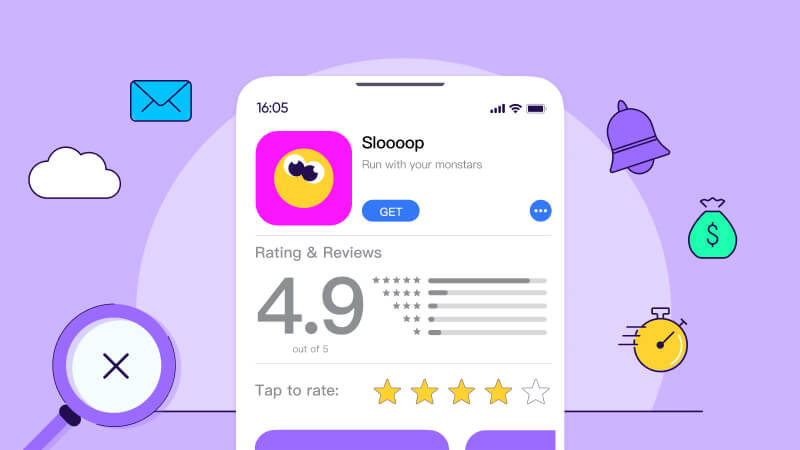
Once you get users to leave a rating or review, it’s time to understand and analyze them.
Here’s how to go about this:
Monitoring ratings and reviews is one of those jobs that can easily slide to the bottom of your to-do list as more urgent priorities take over. Be clear on who has ownership of this task and what the timescales are.
Filter and organize your reviews based on positive and negative. You can also use filters to search for certain words you’re interested in to collect information, and change your strategy accordingly.
Don’t hesitate to ask for more information to serve your users better. Review forms may not always have enough space to provide detailed explanations, and taking the conversation off app stores allows you to start a more free, in-depth conversation.
Reach out to unhappy users via email offering a detailed solution to resolve their grievances. If possible, add other sources of information or attachments so that they can use your app optimally. We recommend notifying them later about app updates to ensure they notice the progress.
If you have a global audience, you’ll likely get reviews in other languages.
Don’t ignore them — instead, translate them into your native language to understand what these users want. Sometimes, problems can be geographical, highlighting cultural problems you can adjust to get more satisfied users.
Be sure to acknowledge these reviews by answering them in both languages to show your effort.
The best thing about app ratings and reviews is they make you aware of user preferences. You’ll know which features they want to use and which ones they don’t, making the app development and improvement process significantly easier.
Also, make a note of the language and keywords users use to describe your app. This will give you insights into their app store search behavior, enabling you to refine your ASO strategy to increase app store visibility.
A good app rating is generally four stars or above. Apps with higher ratings and numerous reviews are more likely to attract downloads compared to those with fewer reviews, even if they have a perfect rating.
To boost your app’s ratings and get more reviews, focus on improving performance, release frequent updates addressing user feedback, and ask users to leave a rating or review at moments when they’re most satisfied with your app.
Positive app ratings and reviews serve as social proof, helping your app rank higher in search results, which increases organic traffic and download rates.
The Apple App Store calculates your app’s average rating based on all received ratings, while Google Play emphasizes ratings from the current version of your app, allowing more recent feedback to have a greater impact.
Yes, responding to user reviews — especially negative ones — can improve your app’s rating by showing users you care about their feedback, which may lead them to update their rating.